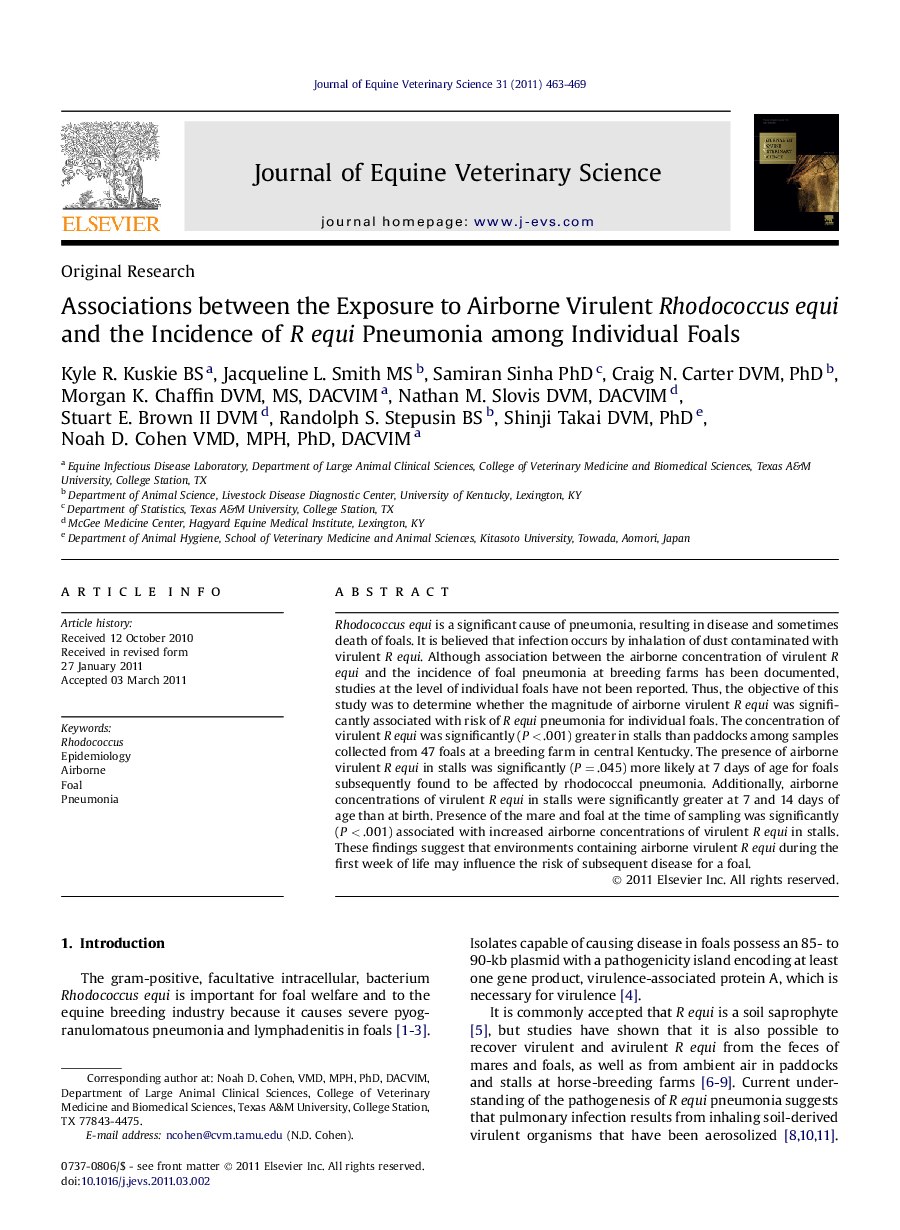| Article ID | Journal | Published Year | Pages | File Type |
|---|---|---|---|---|
| 2395755 | Journal of Equine Veterinary Science | 2011 | 7 Pages |
Abstract
Rhodococcus equi is a significant cause of pneumonia, resulting in disease and sometimes death of foals. It is believed that infection occurs by inhalation of dust contaminated with virulent R equi. Although association between the airborne concentration of virulent R equi and the incidence of foal pneumonia at breeding farms has been documented, studies at the level of individual foals have not been reported. Thus, the objective of this study was to determine whether the magnitude of airborne virulent R equi was significantly associated with risk of R equi pneumonia for individual foals. The concentration of virulent R equi was significantly (P < .001) greater in stalls than paddocks among samples collected from 47 foals at a breeding farm in central Kentucky. The presence of airborne virulent R equi in stalls was significantly (P = .045) more likely at 7 days of age for foals subsequently found to be affected by rhodococcal pneumonia. Additionally, airborne concentrations of virulent R equi in stalls were significantly greater at 7 and 14 days of age than at birth. Presence of the mare and foal at the time of sampling was significantly (P < .001) associated with increased airborne concentrations of virulent R equi in stalls. These findings suggest that environments containing airborne virulent R equi during the first week of life may influence the risk of subsequent disease for a foal.
Related Topics
Life Sciences
Agricultural and Biological Sciences
Animal Science and Zoology
Authors
Kyle R. BS, Jacqueline L. MS, Samiran PhD, Craig N. DVM, PhD, Morgan K. DVM, MS, DACVIM, Nathan M. DVM, DACVIM, Stuart E. DVM, Randolph S. BS, Shinji DVM, PhD, Noah D. VMD, MPH, PhD, DACVIM,
